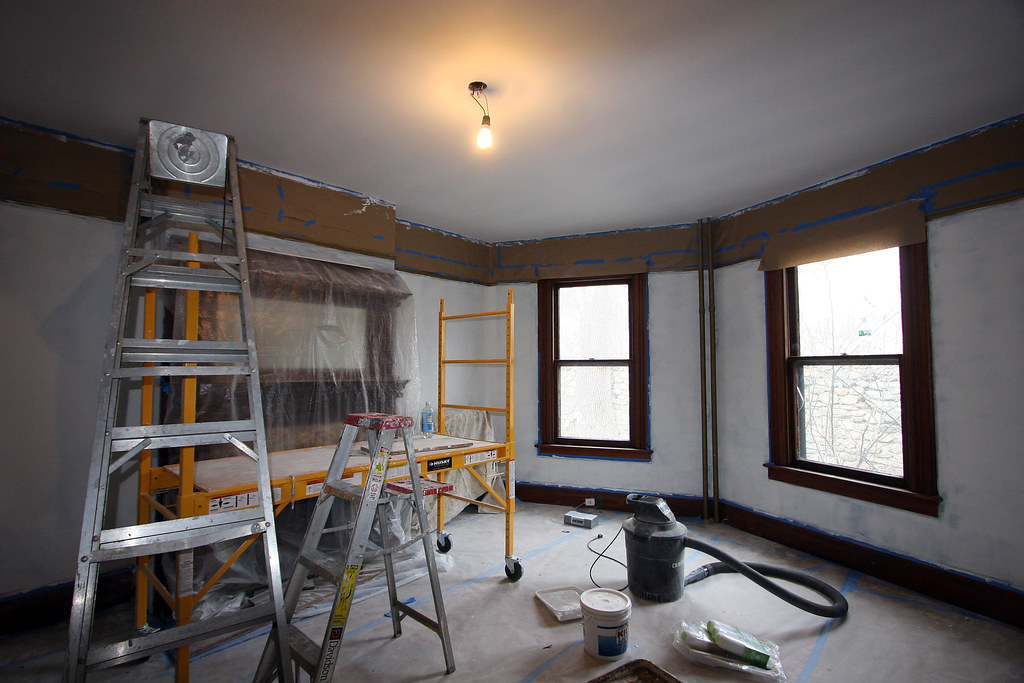Thinking of renovating a house? Discover the insider secrets that could save you thousands and prevent costly mistakes most homeowners make.
The Hidden Truths Behind Home Renovation
Renovating a house is more than just a fresh coat of paint or new fixtures. According to recent statistics, over 65% of UK homeowners underestimate their renovation costs by 20-30%. As experienced plasterers working across Kent, we’ve witnessed countless renovation projects – both successful and challenging. The key to success lies in understanding the hidden aspects that many professionals might not readily share. From structural considerations to material choices, these insights could be the difference between a dream renovation and a costly nightmare.
Planning: The Make-or-Break Phase
The planning phase is crucial, yet studies show that 40% of renovation projects in the UK fail due to inadequate planning. A well-thought-out plan isn’t just about design; it’s about understanding the sequence of works, potential challenges, and establishing realistic timeframes. Before any work begins, you need a comprehensive strategy that considers everything from structural requirements to finishing touches.
Design and Vision
- Create detailed sketches or 3D renderings of your desired outcome
- Establish clear renovation goals and priorities
- Consider the property’s existing architecture and character
- Plan room layouts with furniture placement in mind
- Document specific measurements and spatial requirements
Budget Reality Check
Recent market analysis reveals that the average UK house renovation costs between £38,000 to £74,000. However, these figures can vary significantly based on location and scope. When budgeting, consider:
- Add a 20% contingency buffer for unexpected issues
- Factor in planning permission costs (typically £200-£500)
- Include survey fees and professional consultations
- Consider temporary accommodation costs if needed
- Account for material price fluctuations
The Structural Secrets
Understanding the structural implications of your renovation is crucial. Statistics show that 35% of renovation complications arise from unforeseen structural issues. Many homeowners don’t realise that even seemingly cosmetic changes can impact the structural integrity of their property. Before removing any walls or making significant alterations, professional assessment is essential.
Common Structural Pitfalls
- Load-bearing wall identification errors
- Inadequate support during renovation works
- Damp problems behind existing plasterwork
- Electrical and plumbing system conflicts
- Foundation stress from additional weight
Permits and Regulations
Navigating building regulations can be complex. In 2023, 45% of UK renovation projects required some form of planning permission. Understanding and obtaining the necessary approvals is crucial before work begins. Local authority requirements vary, but generally include:
- Building regulations approval
- Planning permission for significant changes
- Party wall agreements with neighbours
- Conservation area considerations
The Truth About Timelines
Realistic timeline expectations are crucial for successful renovations. Industry data suggests that renovation projects typically take 30-50% longer than initially planned. Weather conditions, material availability, and contractor scheduling all play crucial roles in project duration. Understanding these factors helps set realistic expectations and reduce stress during the renovation process.
Phase Planning
Breaking down your renovation into manageable phases is essential for both budget control and practical execution. A typical renovation sequence includes:
- Phase 1: Demolition and structural work
- Phase 2: First fix (electrical, plumbing)
- Phase 3: Plastering and preparation
- Phase 4: Second fix and finishing
- Phase 5: Decorating and final touches
Material Matters
Choosing the right materials significantly impacts both the immediate success and long-term durability of your renovation. Research indicates that using quality materials can extend renovation longevity by up to 40%. While premium materials might seem costly initially, they often prove more cost-effective over time.
Quality vs Cost
- Premium plaster products last 25+ years
- Higher-grade insulation materials save on energy costs
- Quality paint finishes require fewer touch-ups
- Durable flooring materials reduce replacement frequency
The Professional Perspective
From our experience as Kent plasterers, we’ve observed that successful renovations rely heavily on professional expertise and clear communication. Projects with professional oversight are 60% more likely to finish on time and within budget. Understanding the value of professional input can save significant time and money.
Choosing the Right Contractors
- Check credentials and insurance coverage
- Review past work and client testimonials
- Ensure clear written quotes and contracts
- Verify timeline commitments and availability
- Confirm warranty and aftercare services
Making Informed Decisions
Success in house renovation comes from making informed decisions at every stage. Understanding the complexities involved, from structural considerations to material choices, enables better planning and execution. Remember that investing in quality workmanship and materials typically pays dividends in the long run.
Key Takeaways
- Plan thoroughly and budget realistically
- Prioritise structural integrity and necessary permits
- Choose quality materials and trusted professionals
- Maintain clear communication throughout
- Expect and prepare for the unexpected
Next Steps
Ready to start your renovation journey? Begin by creating a detailed plan, setting a realistic budget, and consulting with qualified professionals. Remember, successful renovations are built on careful planning, quality materials, and expert execution. For plastering needs in Kent and surrounding areas, consider working with experienced professionals who understand the complexities of home renovation.
FAQ
Do you renovate walls or floors first?
Here’s the quick answer: always do your floors before your walls. But don’t just take my word for it. Let’s delve into the ‘why’ behind this golden rule, supported by logic, practicality, and years of hard-earned wisdom from seasoned flooor renovation pros.
Which rooms to renovate first?
Start With Your Highest-Priority Room Farkash says to begin with the repairs in your first-priority room, and then move onto the cosmetic changes after they are completed. “It’s a good idea to start with your highest priority,” he says, which is usually the kitchen for most homeowners.
Sources
[1] https://www.thespruce.com/how-to-renovate-a-house-1822429
[2] https://www.davefox.com/resource-center/whole-home-remodeling-steps-checklist
[3] https://www.rocketmortgage.com/learn/home-renovation-costs

